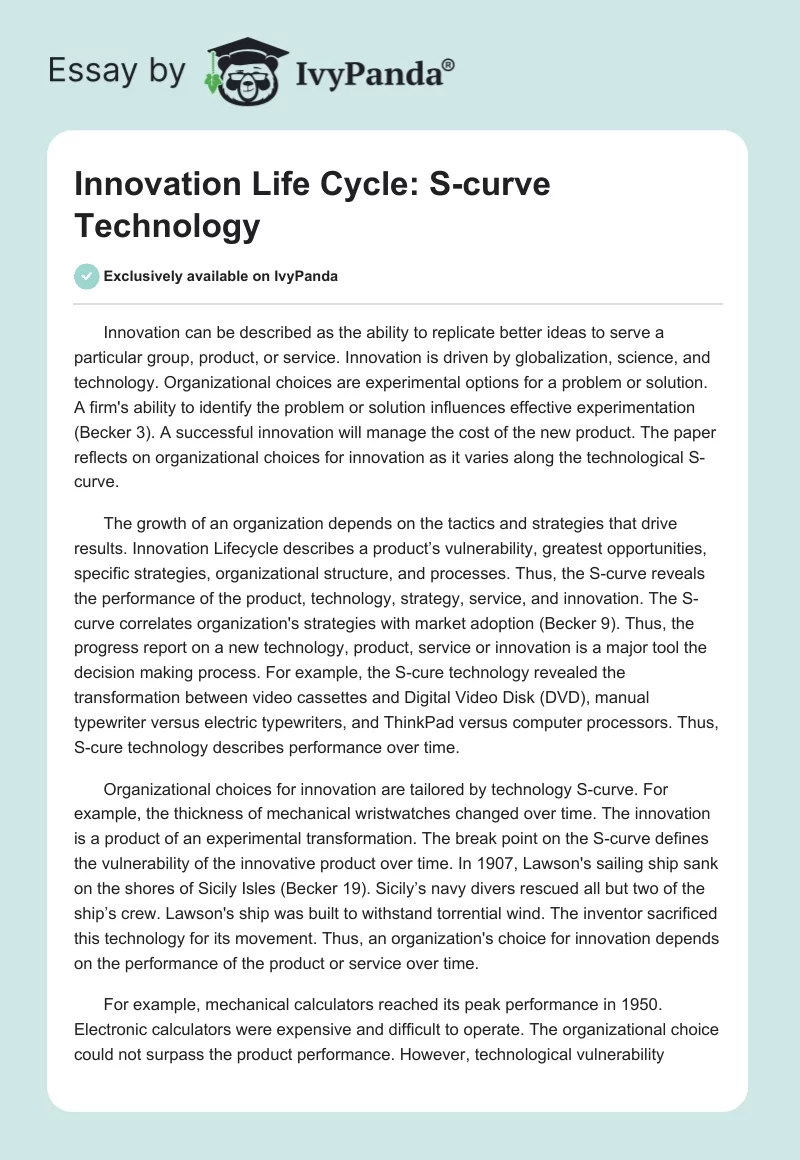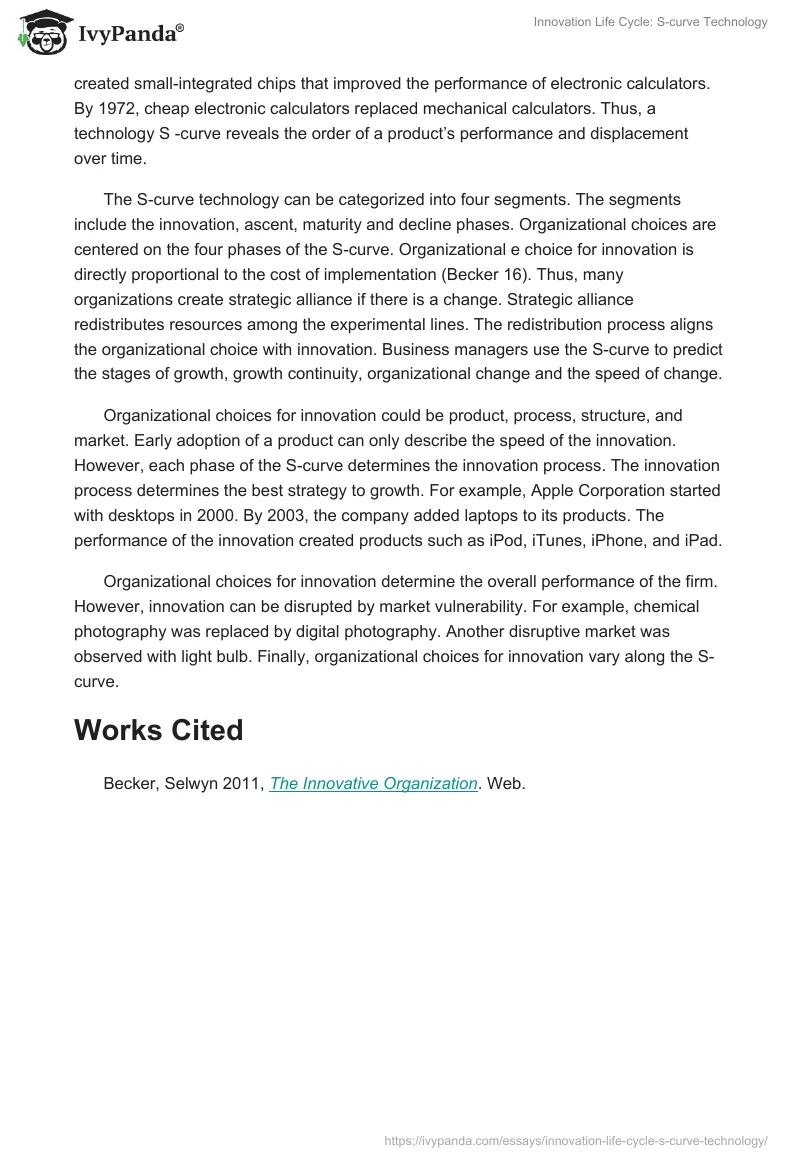Innovation can be described as the ability to replicate better ideas to serve a particular group, product, or service. Innovation is driven by globalization, science, and technology. Organizational choices are experimental options for a problem or solution. A firm’s ability to identify the problem or solution influences effective experimentation (Becker 3). A successful innovation will manage the cost of the new product. The paper reflects on organizational choices for innovation as it varies along the technological S-curve.
The growth of an organization depends on the tactics and strategies that drive results. Innovation Lifecycle describes a product’s vulnerability, greatest opportunities, specific strategies, organizational structure, and processes. Thus, the S-curve reveals the performance of the product, technology, strategy, service, and innovation. The S-curve correlates organization’s strategies with market adoption (Becker 9). Thus, the progress report on a new technology, product, service or innovation is a major tool the decision making process. For example, the S-cure technology revealed the transformation between video cassettes and Digital Video Disk (DVD), manual typewriter versus electric typewriters, and ThinkPad versus computer processors. Thus, S-cure technology describes performance over time.
Organizational choices for innovation are tailored by technology S-curve. For example, the thickness of mechanical wristwatches changed over time. The innovation is a product of an experimental transformation. The break point on the S-curve defines the vulnerability of the innovative product over time. In 1907, Lawson’s sailing ship sank on the shores of Sicily Isles (Becker 19). Sicily’s navy divers rescued all but two of the ship’s crew. Lawson’s ship was built to withstand torrential wind. The inventor sacrificed this technology for its movement. Thus, an organization’s choice for innovation depends on the performance of the product or service over time.
For example, mechanical calculators reached its peak performance in 1950. Electronic calculators were expensive and difficult to operate. The organizational choice could not surpass the product performance. However, technological vulnerability created small-integrated chips that improved the performance of electronic calculators. By 1972, cheap electronic calculators replaced mechanical calculators. Thus, a technology S -curve reveals the order of a product’s performance and displacement over time.
The S-curve technology can be categorized into four segments. The segments include the innovation, ascent, maturity and decline phases. Organizational choices are centered on the four phases of the S-curve. Organizational e choice for innovation is directly proportional to the cost of implementation (Becker 16). Thus, many organizations create strategic alliance if there is a change. Strategic alliance redistributes resources among the experimental lines. The redistribution process aligns the organizational choice with innovation. Business managers use the S-curve to predict the stages of growth, growth continuity, organizational change and the speed of change.
Organizational choices for innovation could be product, process, structure, and market. Early adoption of a product can only describe the speed of the innovation. However, each phase of the S-curve determines the innovation process. The innovation process determines the best strategy to growth. For example, Apple Corporation started with desktops in 2000. By 2003, the company added laptops to its products. The performance of the innovation created products such as iPod, iTunes, iPhone, and iPad.
Organizational choices for innovation determine the overall performance of the firm. However, innovation can be disrupted by market vulnerability. For example, chemical photography was replaced by digital photography. Another disruptive market was observed with light bulb. Finally, organizational choices for innovation vary along the S-curve.
Works Cited
Becker, Selwyn 2011, The Innovative Organization. Web.


